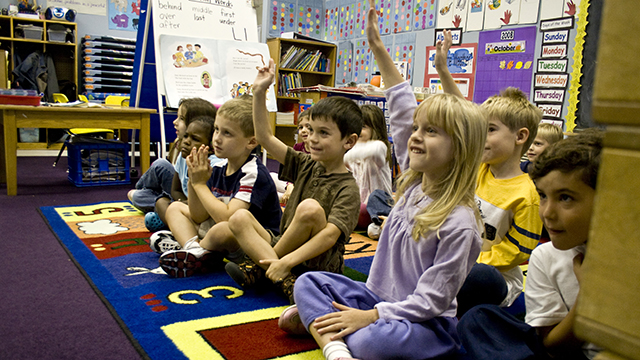This post first appeared at Project Syndicate.

(Photo: woodleywonderworks/flickr CC 2.0)
Children, it has long been recognized, are a special group. They do not choose their parents, let alone the broader conditions into which they are born. They do not have the same abilities as adults to protect or care for themselves. That is why the League of Nations approved the Geneva Declaration on the Rights of the Child in 1924, and why the international community adopted the Convention on the Rights of the Child in 1989.
Though an average American childhood may not be the worst in the world, the disparity between the country’s wealth and the condition of its children is unparalleled. About 14.5 percent of the American population as a whole is poor, but 19.9 percent of children – some 15 million individuals – live in poverty. Among developed countries, only Romania has a higher rate of child poverty. The US rate is two-thirds higher than that in the United Kingdom, and up to four times the rate in the Nordic countries. For some groups, the situation is much worse: more than 38 percent of black children and 30 percent of Hispanic children, are poor.
None of this is because Americans do not care about their children. It is because America has embraced a policy agenda in recent decades that has caused its economy to become wildly unequal, leaving the most vulnerable segments of society further and further behind. The growing concentration of wealth – and a significant reduction in taxes on it – has meant less money to spend on investments for the public good, like education and the protection of children.
As a result, America’s children have become worse off. Their fate is a painful example of how inequality not only undermines economic growth and stability – as economists and organizations like the International Monetary Fund are finally acknowledging – but also violates our most cherished notions of what a fair society should look like.
Income inequality is correlated with inequalities in health, access to education and exposure to environmental hazards, all of which burden children more than other segments of the population. Indeed, nearly one in five poor American children are diagnosed with asthma, a rate 60 percent higher than non-poor children. Learning disabilities occur almost twice as frequently among children in households earning less than $35,000 a year than they do in households earning more than $100,000. And some in Congress want to cut food stamps – on which some 23 million American households depend, threatening the poorest children with hunger.
These inequalities in outcomes are closely tied to inequalities in opportunities. Inevitably, in countries where children have inadequate nutrition, insufficient access to health care and education, and higher exposure to environmental hazards, the children of the poor will have far different life prospects from those of the rich. And, partly because an American child’s lifetime prospects are more dependent on his or her parents’ income and education than in other advanced countries, the US now has the least equality of opportunity of any advanced country. At America’s most elite universities, for example, only around 9 percent of students come from the bottom half of the population, while 74 percent come from the top quarter.
Most societies recognize a moral obligation to help ensure that young people can live up to their potential. Some countries even impose a constitutional mandate for equality of educational opportunities.
But in America, more is spent on the education of rich students than on the education of the poor. As a result, the US is wasting some of its most valuable assets, with some young people – bereft of skills – turning to dysfunctional activities. American states like California spend about as much on prisons as on higher education – and sometimes more.
Without compensatory measures – including pre-school education, ideally beginning at a very young age – unequal opportunities translate into unequal lifelong outcomes by the time children reach the age of five. That should be a spur to policy action.
Indeed, while inequality’s harmful effects are wide-reaching, and impose huge costs on our economies and societies, they are largely avoidable. The extremes of inequality observed in some countries are not the inexorable result of economic forces and laws. The right policies – stronger social safety nets, progressive taxation and better regulation (especially of the financial sector), to name a few – can reverse these devastating trends.
To generate the political will that such reforms require, we must confront policymakers’ inertia and inaction with the grim facts of inequality and its devastating effects on our children. We can reduce childhood deprivation and increase equality of opportunity, thereby laying the groundwork for a more just and prosperous future – one that reflects our own avowed values. So why don’t we?
Of the harm that inequality inflicts on our economies, politics and societies, the damage done to children demands special concern. Whatever responsibility poor adults may bear for their lot in life – they may not have worked hard enough, saved enough or made good decisions – children’s circumstances are thrust upon them without any sort of choice. Children, perhaps more than anyone, need the protection that rights afford – and the US should be providing the world with a shining example of what that means.
The views expressed in this post are the author’s alone, and presented here to offer a variety of perspectives to our readers.


